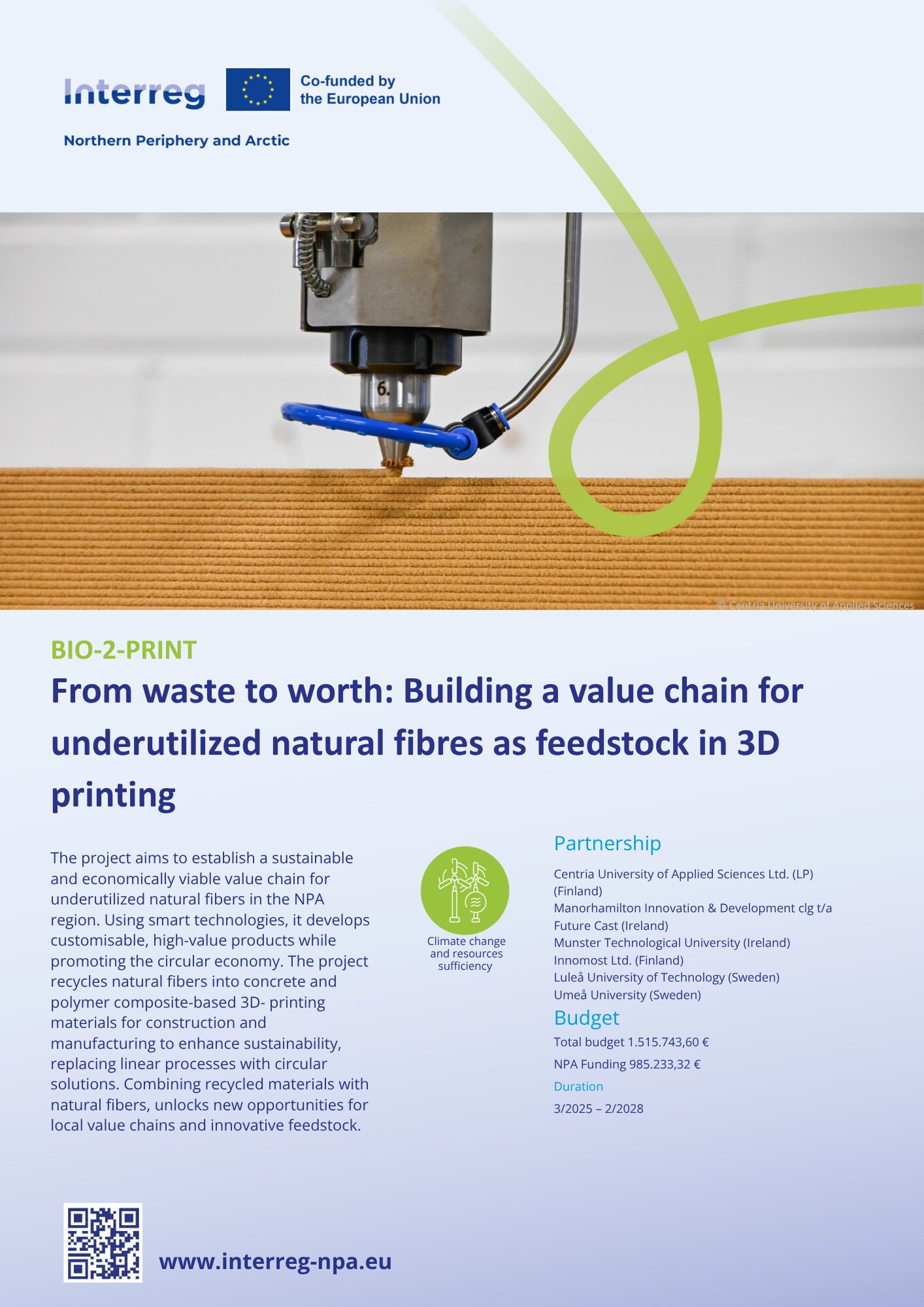Innomost is taking part in the BIO-2-PRINT project – a collaborative effort to turn underused natural fibres from the Northern Periphery and Arctic (NPA) region into valuable materials for 3D printing.
Natural fibres from forestry and agriculture are frequently underutilised or discarded, despite their potential. The BIO-2-PRINT project aims to address this by establishing a sustainable value chain that enables the efficient use of these fibres in high-value applications.
BIO-2-PRINT brings together partners across sectors to develop smart, customisable solutions that blend recycled materials with natural fibres. The result: environmentally friendly feedstock for 3D printing in construction and manufacturing. It’s a clear step towards a circular economy – one where we use what we already have, rather than extracting more.
At Innomost, our role in the project builds on what we do best – finding new uses for side streams like birch bark. Joining BIO-2-PRINT is a natural fit with our commitment to sustainable innovation and regional resilience. Our contribution draws on our experience in upcycling forest industry side streams, particularly birch bark. Participating in BIO-2-PRINT aligns with our long-term commitment to sustainable innovation and resource efficiency. We see this project as a concrete step towards advancing circular solutions in materials development, while also supporting regional collaboration and knowledge-sharing across sectors.
More information on the project: BIO-2-PRINT


